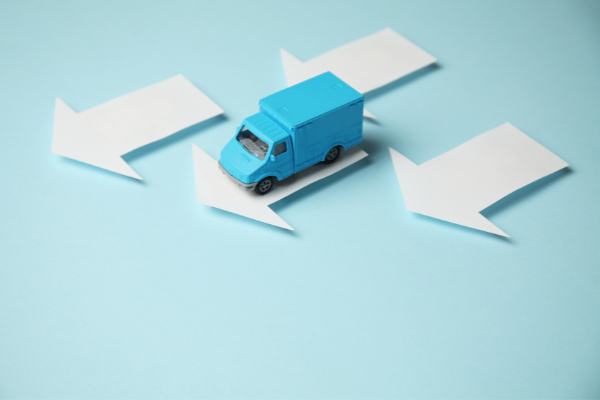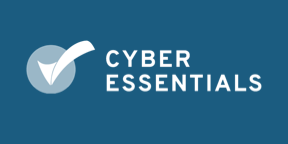BY:
SHARE:

GVMS, or the Goods Vehicle Movement Service, was introduced following the UK’s exit from the EU, to allow both EU imports and exports to flow more efficiently through UK RORO ports. You should bear in mind that these EU facing RORO ports, unlike the deep-sea container port and major international airports, lacked the infrastructure (no electronic inventory control system – also known as the pre-lodgement model) to handle exports and imports.
Full implementation of GVMS occurred on January 1, 2022, for Imports and exports, with partial integration in effect from January 1, 2021.
GVMS works by allowing the risking of declarations (i.e., cleared, or uncleared) in HMRC systems and automatically arriving the declaration on HMRC’s Customs Declaration Service (CDS) when the goods physically arrive the port.
The GMR (Goods Movement Reference) is created within GVMS by linking the vehicle registration and Customs declaration together. The automatic number plate recognition (ANPR) cameras read the vehicle registration at the RORO location and allows the port to subsequently arrive the Customs declaration on the CDS system.
By doing so at this point, the haulier will know if the goods are Customs cleared or if there is a requirement for the goods to be held or inspected following documentary or physical inspection.
Who can apply to use it?
GVMS is an online service available through Gov.uk, enabling traders, hauliers, and agents to register and link Customs declarations to vehicle registrations. It is not dependent on a specific party, although in most cases, it is the haulier who is responsible.
This is because the Haulier is usually the party that knows all the transport details, such as the vehicle registration and Customs declaration.
You only need to register once to use the service, which can be activated here -https://www.gov.uk/guidance/register-for-the-goods-vehicle-movement-service
Do you need to submit more than one GMR?
A GMR (Goods Movement Reference) is the reference number generated once the details have been submitted through the GVMS service. It allows the declaration references to be linked together so that the person moving the goods only has to present one GMR reference at the port.
Did you know? For exports from the UK, goods cannot board the ferry or Eurotunnel until a GMR has been created, and for imports into the UK, goods cannot board the ferry or Eurotunnel until there is a GMR in place.
The haulier cannot board the ferry without the GMR.
Are all ports GVMS ports?
Not all ports are GVMS ports, and specific export ports require an Arrived Export Declaration to be submitted. This is port-dependent, and further guidance on this can be found here: https://www.gov.uk/guidance/check-which-locations-need-an-arrived-export-declaration-from-1-january-2022
Some ports have both an inventory control side and a GVMS side, so you would need to check with the Carrier/Ferry company accordingly before import or export. Your haulier may also be able to handle this, so you can always double-check.
https://www.gov.uk/guidance/list-of-ports-using-the-goods-vehicle-movement-service
What about transit movements?
Transit movements are also managed through GVMS, which allows for the automatic operation of transit functions.
You will need the MRN of the Transit Accompanying Document for imports under transit, or the DUCR (Declaration Unique Consignment Reference) for exports under transit.
Are all imports and exports through GVMS subject to inspection?
The answer to this is no; not all shipments are inspected by Border Force or for a documentary inspection by the national clearance hub.
Just as not all shipments through a container port or airport are inspected.
You can check if you need an inspection for your shipment that is imported or exported by using the following link:
To use the service, you will need to know the GMR reference of the goods being imported or exported.
If you need to attend an inland border facility, you would be directed as such, and there is further guidance which can be found here: https://www.gov.uk/government/publications/attending-an-inland-border-facility/attending-an-inland-border-facility
Note that you may be liable for a penalty of up to £2500 if you do not follow HMRC guidance.
The Full GVMS collection of HMRC guidance can be found here: https://www.gov.uk/government/collections/goods-vehicle-movement-service.
OneCall™ Email assistance as and when required; A one-call solution for all your import, export and customs enquiries. Export help. Import help. Customs help.
Stay informed about customs and international trade matters by subscribing to our OneCall™ service. This comprehensive offering includes a dedicated email helpline for support, timely practical updates direct to your inbox (Did You Know?), monthly UK Customs & Trade Briefings and access to an interactive members' area with an exclusive community for our subscribers.
International Trade Updates & Spotlight Newsletter
Subscribe to our free information emails covering international trade topics...
MORE INDUSTRY INSIGHTS...










